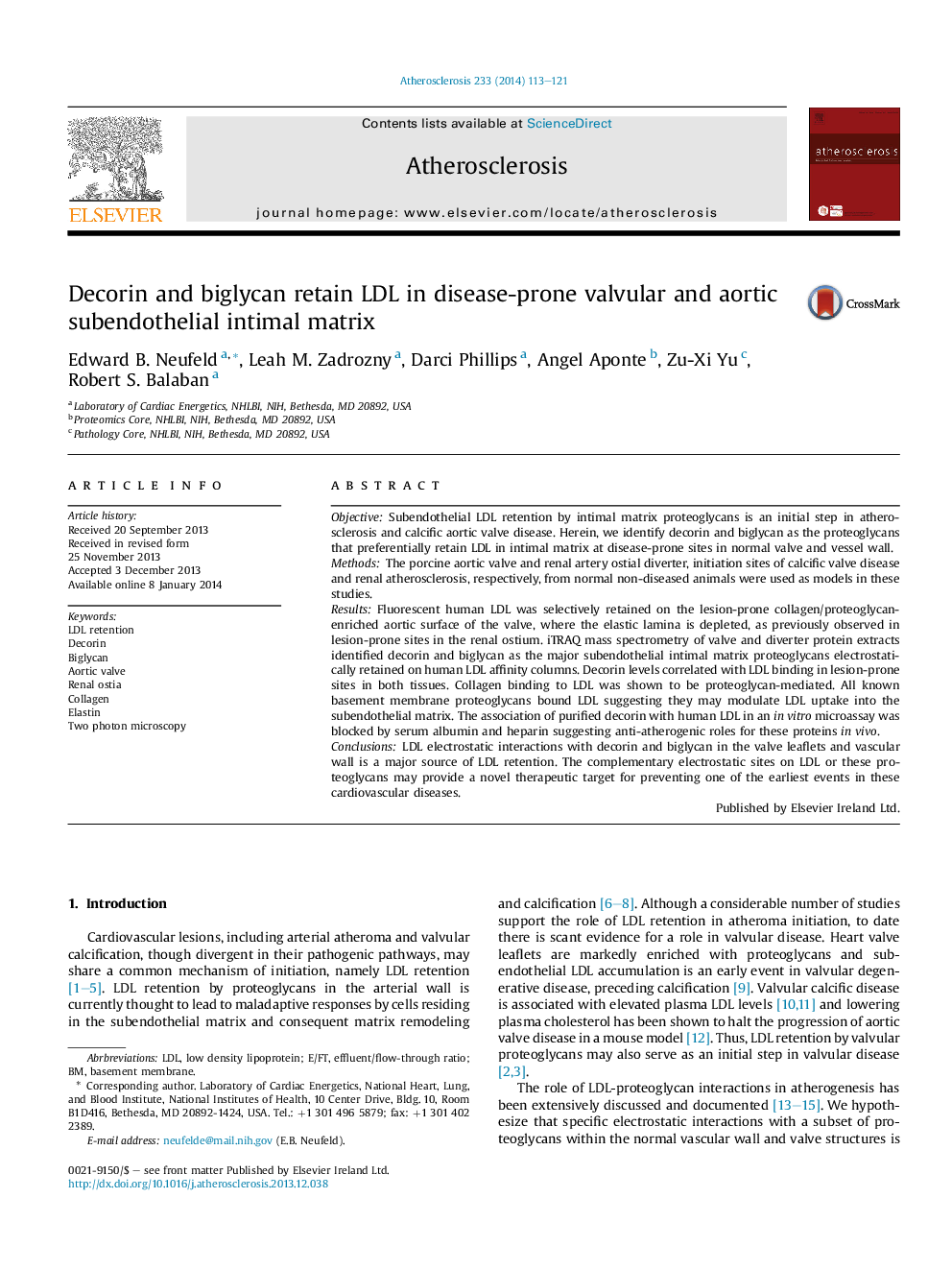| کد مقاله | کد نشریه | سال انتشار | مقاله انگلیسی | نسخه تمام متن |
|---|---|---|---|---|
| 5946574 | 1172360 | 2014 | 9 صفحه PDF | دانلود رایگان |

- Lesion-prone vascular LDL-binding sites are collagen and proteoglycan enriched.
- Decorin and biglycan retain LDL in lesion-prone arteries and heart valve leaflets.
- Collagen binding to LDL is proteoglycan-mediated.
- Basement membrane proteoglycans may modulate LDL entry into vascular intima.
- Blocking the LDL-proteoglycan interaction may prevent arterial and valve disease.
ObjectiveSubendothelial LDL retention by intimal matrix proteoglycans is an initial step in atherosclerosis and calcific aortic valve disease. Herein, we identify decorin and biglycan as the proteoglycans that preferentially retain LDL in intimal matrix at disease-prone sites in normal valve and vessel wall.MethodsThe porcine aortic valve and renal artery ostial diverter, initiation sites of calcific valve disease and renal atherosclerosis, respectively, from normal non-diseased animals were used as models in these studies.ResultsFluorescent human LDL was selectively retained on the lesion-prone collagen/proteoglycan-enriched aortic surface of the valve, where the elastic lamina is depleted, as previously observed in lesion-prone sites in the renal ostium. iTRAQ mass spectrometry of valve and diverter protein extracts identified decorin and biglycan as the major subendothelial intimal matrix proteoglycans electrostatically retained on human LDL affinity columns. Decorin levels correlated with LDL binding in lesion-prone sites in both tissues. Collagen binding to LDL was shown to be proteoglycan-mediated. All known basement membrane proteoglycans bound LDL suggesting they may modulate LDL uptake into the subendothelial matrix. The association of purified decorin with human LDL in an in vitro microassay was blocked by serum albumin and heparin suggesting anti-atherogenic roles for these proteins in vivo.ConclusionsLDL electrostatic interactions with decorin and biglycan in the valve leaflets and vascular wall is a major source of LDL retention. The complementary electrostatic sites on LDL or these proteoglycans may provide a novel therapeutic target for preventing one of the earliest events in these cardiovascular diseases.
Journal: Atherosclerosis - Volume 233, Issue 1, March 2014, Pages 113-121